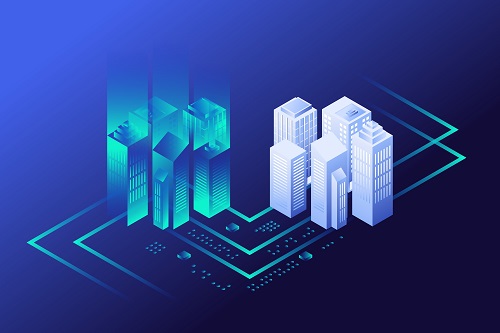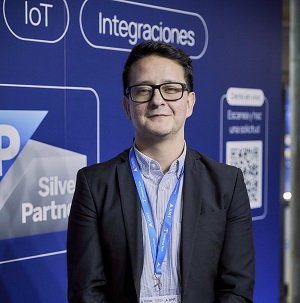With growing infrastructure demands and tighter budgets, traditional reactive strategies in facilities management often result in unplanned downtime and expensive breakdowns. A Deloitte study found that predictive maintenance—which includes strategies that anticipate problems before they occur, reducing costs and increasing efficiency—can result in up to 15% reduction in downtime and up to 20% improvement in labor productivity.

Digital twins have emerged as a valuable technology for facilities managers to shift from reactive to predictive maintenance, as they anticipate problems and lead to effective planning.
Digital twins are virtual representations of an object, process, or physical system. They analyze vast amounts of data gathered through sensors so that they can stimulate, predict, and model the performance of physical objects digitally. This model can suggest effective maintenance planning that avoids costly breakdowns of equipment by noticing patterns and anticipating failures.
The accuracy and effectiveness of digital twins have improved due to advances in sensor technology and the widening adoption of the Internet of Things (IoT). Gartner suggests that over 40% of large organizations will be utilizing digital twins. Last year, the global digital twin market was valued at $17.7 billion, a number projected to grow to $24.48 billion in 2025, according to Fortune Business Insights.
For the world of facilities management, digital twins can provide a holistic view that fosters strategic decision-making and smarter maintenance planning. But there are challenges to implementing digital twins in facilities. The large amount of data that these models process requires a highly specific technology to ensure safety and efficiency.
How to Implement Digital Twins
Digital twins create virtual models that accurately replicate equipment, systems, or even whole buildings. Their goal is to mirror the structure and performance of a real-world asset in a digital environment.
The process begins by installing IoT sensors on all equipment. The sensors collect data from systems and equipment and transmit it to a cloud platform. Data sets range from energy use and temperature to pressure and vibration, and with this information, it is possible to detect anomalies that could indicate an imminent failure. The data from IoT sensors can be reinforced further by connecting to artificial intelligence (AI) agents, which perform advanced data analysis, generating accurate recommendations for facilities managers.
With IoT devices connected to an asset, maintenance staff no longer need to perform constant inspections. Real-time data provides complete visibility into asset status, allowing for efficient resource allocation and prioritization. Overall, IoT sensors and AI agents support the centralization of operations in facilities management, and in manufacturing, they allow you to optimize operating costs and improve maintenance efficiency with a data-driven approach.
With this historical and real-time data, digital twins create virtual models that replicate the performance of the system. This allows them to identify patterns and trends that may not be noticeable with reactive maintenance strategies, as they forecast problems and recommend maintenance strategies that are efficient and predictive.
Digital twins can also improve the life cycle of equipment by detecting which parts of a system require more maintenance. For example, in industrial equipment within a commercial building, a digital twin can identify which parts experience the most strain and suggest more frequent routine maintenance. These models can optimize the schedule for cleaning HVAC systems by tracking airflow and detecting blocked filters. Additionally, for electrical infrastructure, digital twins can predict the degradation of circuit breakers over time by measuring temperature and energy use in each transformer.
By anticipating issues, reducing downtime, and optimizing maintenance costs, digital twins can create smart facilities ready for the future.
Common Challenges and How to Address Them
Despite the benefits of digital twins for smart facilities, adoption can present several challenges that facilities must address to guarantee a successful implementation.
First is the cost of implementation. The deployment of digital twins requires a significant investment in hardware, software, and staff training, which can be a barrier, especially for small and midsize enterprises.
The varying quality of data and a lack of standardization can also complicate the process of implementation, because the efficacy of a digital twin depends on the integration of data from multiple sources.
However, large integrated datasets come with the increased possibility of cyber threats. To protect the confidentiality of information handled by a digital twin, robust security measures must be implemented.
Additionally, the growth of operations can also pose a challenge, as digital twins must be able to scale without losing efficiency or functionality. Growing data sets will require more advanced and adaptable technological infrastructure; hence, ongoing support becomes crucial for scalability.
Why Digital Twins Are the Future of Smart Facilities
One of the most attractive advantages of digital twins in facilities management is their potential to reduce costs. By anticipating problems and optimizing equipment performance, digital twins help minimize repairs and replacement costs. According to Deloitte Insights2Action, the use of digital twins can reduce maintenance costs by between 20% and 30%.
Savings are not limited to maintenance costs since digital twins can also reduce the investment in new equipment by extending the life cycle of existing machinery. By improving operational efficiency, this technology reduces the consumption of energy and other resources, leading to further operational savings.
Digital twins are revolutionizing facilities management through the ongoing monitoring and analysis of data, enabling facilities managers to shift from reactive to predictive maintenance.

Sergio Carvajal is a technical success IoT specialist at Fracttal, an asset management solution provider. Based in Spain, Carvajal holds credentials from MIOTI, Tech & Business School, reinforcing his strong foundation in both technology and business strategy.
